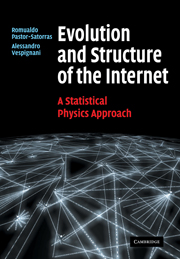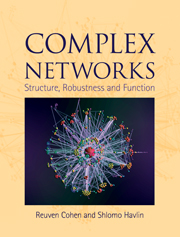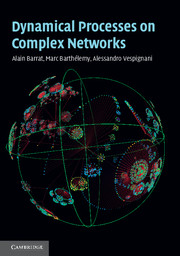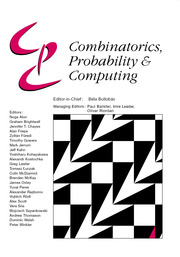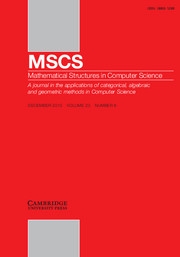Evolution and Structure of the Internet
This book, first published in 2004, describes the application of statistical physics and complex systems theory to the study of the evolution and structure of the Internet. Using a statistical physics approach the Internet is viewed as a growing system that evolves in time through the addition and removal of nodes and links. This perspective permits us to outline the dynamical theory required for a description of the macroscopic evolution of the Internet. The presence of such a theoretical framework appears to be a revolutionary and promising path towards our understanding of the Internet and the various processes taking place on this network, including, for example, the spread of computer viruses or resilience to random or intentional damages. This book will be of interest to graduate students and researchers in statistical physics, computer science and mathematics studying in this subject.
- Statistical physics and complex systems theory applied to the understanding of the Internet physical structure
- Interdisciplinary approach to the study of the global Internet
- A comprehensive presentation of the scientific characterization of the Internet
Reviews & endorsements
'This book illustrates again how the ideas of physics seem to apply to almost everything.' New Scientist
'… clear and well written.' Journal of Documentation
'The approach the authors take is radically different: being important contributors to the field of complex networks, they use this expertise here in tackling various practical problems related to the information superhighway. … authors provide ample references to choose from for the interested. … The collection of topics in this book is broad, just as the Internet is itself. … [This book is] a good point of reference or entry-level introduction to complex networks, and definitely an interesting read.' Journal of Statistical Physics
Product details
No date availablePaperback
9780521714778
284 pages
243 × 169 × 14 mm
0.463kg
81 b/w illus. 8 tables
Table of Contents
- Preface
- List of abbreviations
- 1. A brief history of the Internet
- 2. How the Internet works
- 3. Measuring the global Internet
- 4. The Internet's large-scale topology
- 5. Modeling the Internet
- 6. Internet robustness
- 7. Virtual and social networks in the Internet
- 8. Searching and walking on the Internet
- 9. Epidemics in the Internet
- 10. Beyond the Internet's skeleton: traffic and global performance
- 11. Outlook
- Appendix I: graph theory applied to topology analysis
- Appendix II: interface resolution and router topology
- Appendix III: numerical analysis of heavy-tailed distributions
- Appendix IV: degree correlations
- Appendix V: scale-free networks: scaling relations
- Appendix VI: the SIR model of virus propagation
- References
- Index.

